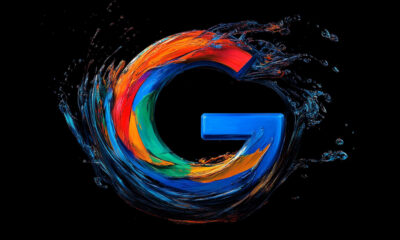SEO
Is Google Search Worse? Many Seem to Agree

A member of Reddit asked if Google search was becoming worse and thousands of others responded overwhelmingly that Google search was not showing what they were looking for. The SEO community on Twitter picked up the discussion and largely agreed.
Google Search Quality Has Declined, According to Users?
While a few members of Reddit (referred to as Redditors) said that Google search used to be worse and asserted that Google was better now, those that defended Google Search were in the minority.
Seemingly most of the commenters on the Reddit thread claimed that Google search was worse and for a variety of reasons.
Articles With a Poor User Experience
A common theme at Reddit was that Google was surfacing content with a bad user experience.
One Sentence Web Pages
An example of a bad user experience that Google ranks are the listicle pages that force a user to keep clicking to read an article one sentence at a time.
One Redditor commented:
“I’m no SEO optimization expert or anything, but the amount of [redacted] blog posts I get when looking up stuff is ridiculous. I think the absolute worst offender are those sites that do the “TOP 10 OF X THING” that legitimately interests you, but instead of just listing them in order on the page, they use …slides…”
Every Site in SERPs Wants to Sell You Something
Another common complaint was that sites ranking for informational queries had a sales slant. That results in the situation where a search for information leads to sites that are advertising or selling a product.
One Redditor complained:
“most results are just road maps to point you towards buying something rather than giving you info.
I searched something the other day… something fairly mundane and was hoping to just find intel on it.
All google gave me was a bunch of amazon, ebay, walmart, and other big box retail links. …I just wanted to know about this thing, im not looking to buy… if I wanted that I’d use the shopping tab.”
Another Redditor agreed, writing:
“Agree. What’s the point of having a shopping tab if everything is shopping?”
A subsequent comment from another member observed that searching for information about dental fillings resulted in low quality listicles of best fillings to buy and other content that was focused on selling dental fillings rather than provide information about it.
Pages That Force Scrolling to Find the Content
Another form of bad user experience that was complained about were sites featuring an informational query that forced a user to scroll past paragraphs of content in order to reach the answer they were looking for.
One Redditor explained:
“The worst is when I’m looking for a release date, for example, and it’s a 5 paragraph article.
“You want to know the date? We’ll tell you the release date.
Just keep scrolling past these ads to find out the release date.”
…irrelevant backstory
“The release date is coming soon. Everyone is excited for the release date”
More ads
“Now a lot of people wonder what the release date is. Currently we do not have a release date.”“
Google Offers a Response
A Google spokesperson contacted Search Engine Journal and offered this response:
“We’re constantly making improvements to our systems – 5,000 in 2021, based on more than 800,000 quality tests – to make sure we’re delivering helpful and relevant information.
Over the last seven years, we decreased irrelevant results by over 50%, and our AI identified nearly six times more spam sites than last year, keeping more than 99% of Search spam-free.
We value user input, and anyone can report any issue they may find via the feedback function on Search.
- We’ve made major investments in language understanding and AI to evolve Search along with the internet and the world around us, which is constantly changing.
- Search has automated processes designed to identify and prevent spam or machine-created content from influencing results.
- We always value feedback on areas where we may not get it right, and use this input to help inform product improvements alongside quantitative feedback from live experiments and qualitative feedback from our human reviewers.”
Search Community Opinion on Google Search
On the SEO community side there were many who agreed that Google Search is worse.
A representative tweet:
Definitely worse. This result seems to have changed on mobile now, but I kept it as a wtf example of how search often doesn’t give the best top result 🤦🏻♀️ pic.twitter.com/GGCYM3FsSZ
— Rachael Pilcher | SaaS Copywriter (@MightyFineCopy_) April 20, 2022
Another person offered the opinion that AI content creation was ranking heavily in Google.
He tweeted:
I think AI generated (or assisted) articles is hurting the information ecosystem more than we may realize.
Google in turn could be tweaking the algorithm in unfortunate ways to try to cut through the garbage… but I don’t think it’s working.
— Mike Huggard (@miglehu) April 21, 2022
Big Brands and Clickbait Dominate Google?
Others offered their opinions that big brands and clickbait were dominating Google search results.
They tweeted:
Noticeably worse on my end. Pretty much exclusively Forbes, Hearst, Red, dominating SERPS with their authority portfolios.
A lot of times not even matching search intent correctly and are certainly not industry experts.
— Austin Tuwiner (@AustinTuwiner) April 20, 2022
EAT is a joke when a clickbait site outperforms some of the most credible sites.
— Krishna B. Karki (@midnightstrngr) April 21, 2022
Why Is Google Search Worse?
Both the Reddit and Twitter communities were divided as to why Google search was so bad.
Some blamed the publishers for gaming Google in order to rank content that doesn’t answer informational queries or that offer a poor user experience.
Others blamed Google’s search algorithms since that’s what decides to rank the poor quality content.
A good example of the content and ranking problem can be seen in recipe search queries.
The recipe blogging community believed that Google only ranked long form content. In response, the recipe bloggers published recipes containing long and sometimes irrelevant personal anecdotes that forced site visitors to scroll past paragraphs of irrelevant content to the bottom of the page to find the recipe they were looking for.
The discussions seemed to ultimately lead to this one question:
Are Google search results worse or is the content being published nowadays overwhelmingly poor?
Citations
Read the Original Reddit Discussion
Does anyone else think Google search quality has gone downhill fast?











You must be logged in to post a comment Login